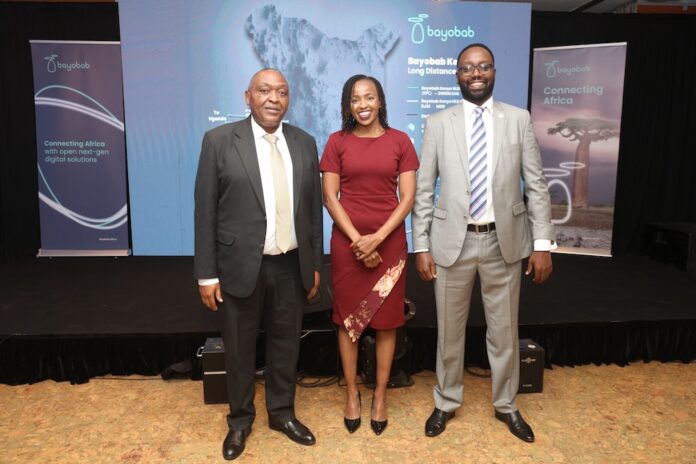Region is benefitting from several fibre developments including Google cable to Australia
Bayobab Kenya, which is part of MTN subsidiary Bayobab Group, has completed a multi-million-shilling long-distance fibre network, connecting Mombasa to Malaba and Busia in Western Kenya. The long-distance fibre runs up to the border of Kenya and Uganda where it interconnects into Uganda for onward connectivity to Rwanda, South Sudan and the Democratic Republic of Congo (DRC).
The route follows Kenya Railway’s metre gauge railway line route spanning more than 1,000 kilometres on the Kenyan side offering an opportunity for towns along the route to be connected to the internet. Internet service providers looking at expanding or boosting connectivity in the areas along the route will be able to leverage Bayobab Kenya’s open access long-distance fibre infrastructure as an efficient high-capacity backbone.
In 2022, Bayobab Kenya launched the first phase of its National Long-Distance fibre running from Mombasa to Malaba along the Kenya Pipeline route. The two fibre routes will complement each other offering the much-needed diversity and redundancy of delivering internet services. The telcos said the newly-launched route will provide a unique alternative for carriers looking for network resilience over existing routes, high-capacity backbones or dark fibre along the route.
“Our Mombasa-to-Malaba Fibre Project in Kenya is a testament to our vision for a connected and empowered country and continent. By connecting Mombasa to Malaba, we aim to create a seamless pathway to Uganda, Rwanda, South Sudan and DRC, fostering economic development and growth across these countries,” said Bayobab Kenya managing director Sylvia Anampiu (above, centre).
“Our strategic investment in Kenya’s segment of the East-to-West Fibre Project underscores our dedication to pushing the boundaries of telecommunications infrastructure through our ‘Ambition 2025’ of building 135,000km of proprietary fibre across Africa,” she said.
“This project is about connecting communities and businesses, creating opportunities, and delivering a modern connected life to more people across the continent. We are confident that this initiative will be a game-changer for connectivity in Kenya and beyond,” she added.
Anampiu said new route represents a “significant milestone” in boosting reliability and ensuring low-latency connectivity inland and cross-border between the East and West coasts of Africa, which the telco said is a “vital step” towards enhancing the digital economy, trade, and economic growth within the region. It will also link landlocked countries to subsea cables at the port of Mombasa using the shortest route and provide a unique route to protect and strengthen services for Bayobab Kenya’s existing and new customers.
The launch event was well attended. Alongside representatives from Kenya Railways, a partner to Bayobab Kenya, Emmanuel Kata Kimeu, ICT secretary at the Ministry of Information, Communication and the Digital Economy; David Mugonyi, the director general of the Communications Authority of Kenya (CA); and James Turuthi, the chairman of the Technology Service Providers of Kenya (TESPOK) all turned up.
More regional connectivity
The new route also complements work Liquid Intelligent Technologies is doing to support Google’s new Umoja cable to Australia, announced in May. That cable will start on a terrestrial route, starting in Kenya, then crossing Uganda, Rwanda, the Democratic Republic of Congo, Zambia, Zimbabwe and South Africa before traversing the bed of the Indian Ocean and landing in Australia.
Kenya has separately announced lofty ambitions to speed up the deployment of 100,000km of fibre across the country from five years to two by using existing infrastructure from the Kenya Power and Lighting Company (KPLC) instead of digging everywhere. That would be quite a feat given Nia Fiber, which the government has been using, had only laid 10,000km of fibre as of April this year according to IT Web.



